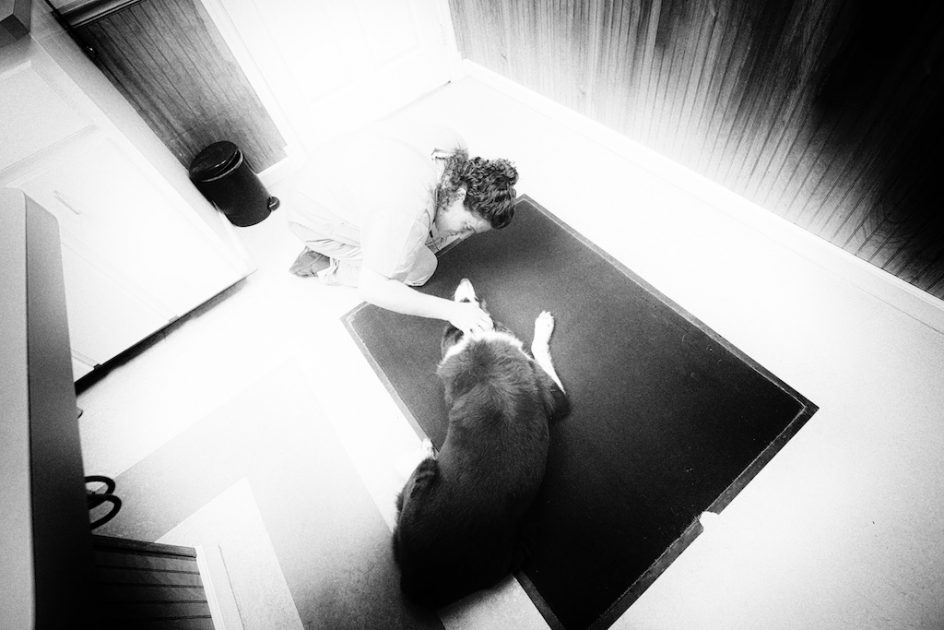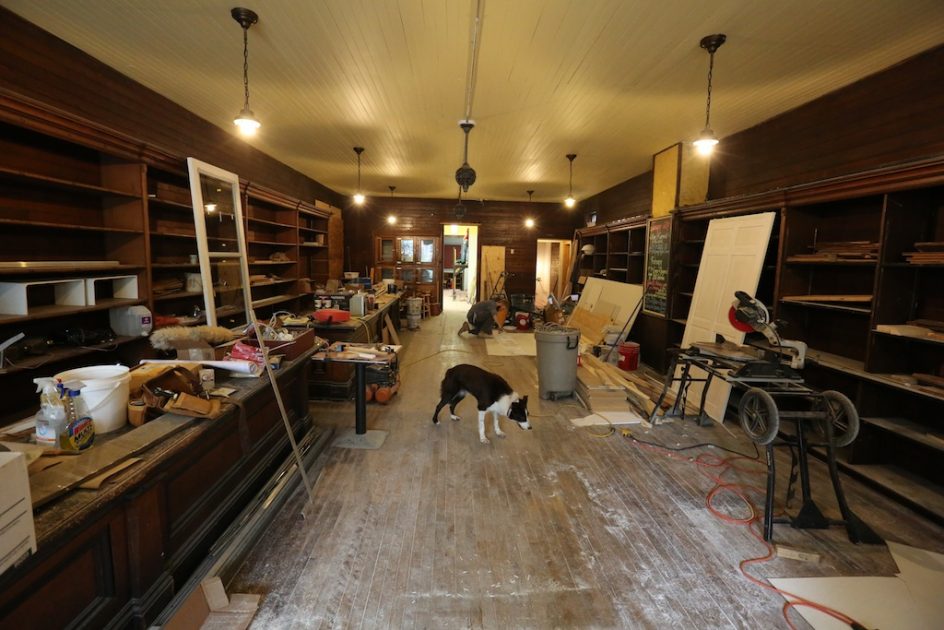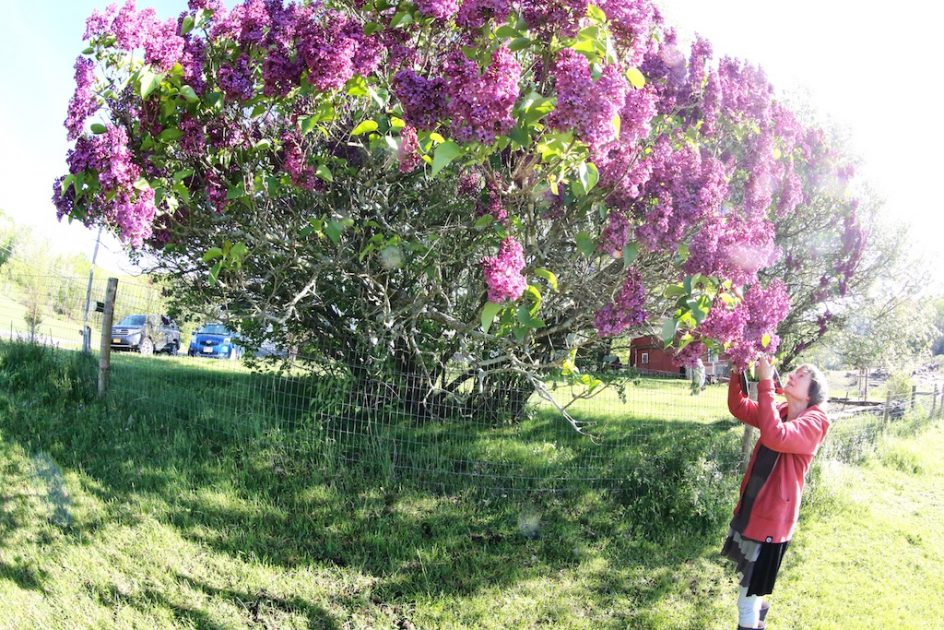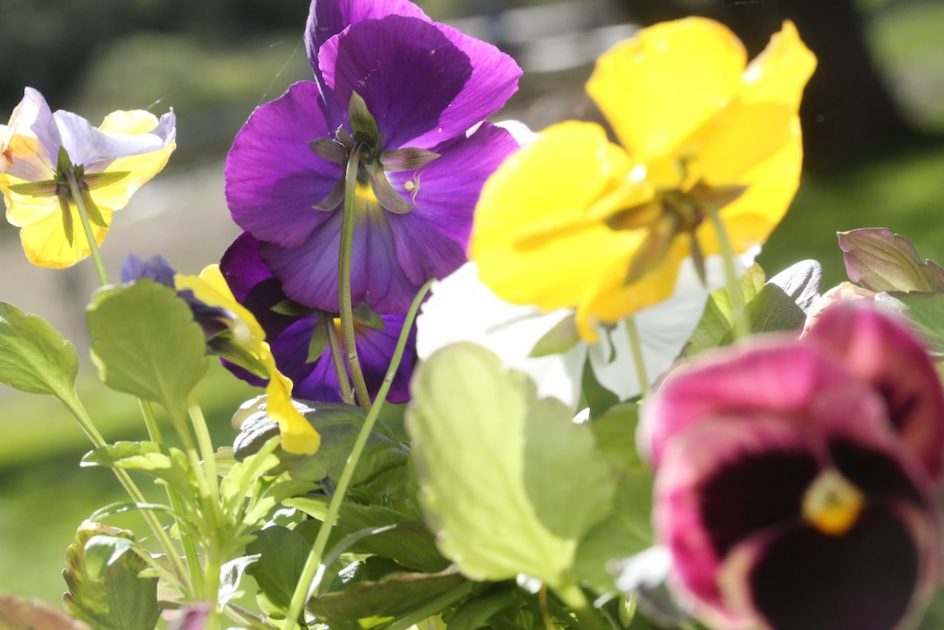
A few days after my book “Talking To Animals” was published, Red fell ill, we thought he was close to dying. Blood tests showed that he tested positive for four different tick-borne infections, more infections in a single dog that any vet we could find had seen at one time.
Red’s temperature was rising steadily, he stopped eating and he barely moved for days. Our vet said she was unsure of the cause. But she knew as well as I did that this combination – high fever and no sustenance – was dangerous.
When our vet, Dr. Suzanne Fariello, saw him, Red was instantly hospitalized and put on an IV to treat his worsening dehydration. Last Tuesday, I began to think he was failing, I had never seen him look so miserable. I wanted to make sure to say goodbye to him, we have meant so much to one another, he has meant so much to so many people.
I could hardly imagine my life without him in some ways, even though I understand that dogs can leave us for many reasons, and we will all survive.
I sat with him in the veterinary hospital, his head on my arm. I remembered my book, and all the stories in it about my talking to animals and listening to them.
Why had I forgotten what I had worked so hard to write? Why was I so fixated on what the vet was saying that I forgot the remarkable dialogue that this dog and I had developed over the four years that I had lived with him. We could talk, we did it all the time.
If there was ever a time to listen to Red and talk to him, wasn’t this the time?I wanted to help, not just watch from the outside.
In the book, i argue that we need a new and wiser understanding of animals, and I shared a number of anecdotes and experiences to show how I had learned to listen to animals and why communication with animals can often be a life-or-death matter for them.
Perhaps I was afraid to put what I had written to such a critical and public test? I want to be clear about one thing: Dr. Fariello was the one who diagnosed Red and treated him, she was thorough and professional and open. I believed she saved his life, not me.
But I had a role to play too, and I realized last Tuesday that I needed to remember my book and work and honor it, and try to help Red directly.
This happened in several ways. I made some decisions on my own, following my instincts. I sat alone with Red in the hospital and closed my eyes and cleared my mind and reached out to him and opened myself up to hearing him. He told me in the language of emotions that we shared that he was not going to die, he was not ready to leave, he was not finished with his work with me or others here on earth.
We had work to do, he said.
Red is a spirit dog, and I know he will one day return to the spirit world, and I hope I will celebrate his life when that day comes rather than simply mourn it. But not yet, not now.
We have good work to do together, he said. I heard him, from that point on, I stopped worrying about his dying and my own rocky emotions, and began to focus on how to help him.
I was told, as the owners of all sick dogs are wisely told, to rest him, to keep him still and in the house. I felt that work was so important to Red, as it is to so many working dogs, that it would be healing for him to come out with me and be with the sheep. I had a strong feeling that he might do light work – holding them in place, keeping them away from the feeders.
I believed this would give Red strength and focus, a sense of pride. He looked so deflated and he seemed – and communicated – that he was so tired. I took him out to the pasture and he gained strength and stature right before my eyes.
This reminded him of who he was, and what he was – I could see it, and that this work restored some of his pride and energy, the naturalists and Chinese medical practitioners would say his Chi, his life spirit, was being revived.
it was as if he had left his illness for a moment and returned to himself. I did this for a few minutes each day, I believe it kept him somewhat grounded, halted his deterioration, gave him strength and a sense of well-being. I believed it kept him from declining further.
I also took him one afternoon to the Mansion, I walked him through the halls, he rushed into the office to greet the staff, and one again, seemed revived and hopeful. I took him in to see his friend Connie, sitting in her chair, she took his head in her hands and kissed in the nose, she could not hide her own tears, as much as she tried. Red’s tail began to wag and he lay down at her feet.
Then we left.
It was essential that I find a way to get him to eat. The fever was raging and he was losing weight and energy.
He could not heal and take those powerful antibiotics he needed without some food to give him strength and help him absorb the medications. By now, i was flooded every day with hundreds of ideas and recipes, but I had no time or wish to read them, this was my dog, I knew him well, I had to open up to him and see and sense what was working.
People have this idea that all dogs are the same, and that what worked for their dog will automatically work with mine, but I do not believe that. Red is not like anybody else’s dog, and nobody else’s dog is like Red.
It was painful to see him walk away from one bowl of food after another, licking his lips in nausea and disoriented with high fever, weak from days without food. This was my responsibility, my opportunity to help. It was as if he had forgotten what food was, or couldn’t smell it (one healer friend told me that a dog’s zinc level drops when they don’t eat, and they can no longer smell the food.)
I put aside the special dog food I’d gotten at the vet, and went to work experimenting with recipes and my own kind of cocktails – grass-fed hamburger, chicken broth, beef gravy, meatloaf, beef-based baby foods, squash, sweet potato. Af first, and for one or two days, I had no luck.
Then Suzanne and I planned a double-pronged assault – I would force the doxycycline down his throat and wait a few hours, then try a new concoction of cooked gravy from a local restaurant – you could smell it a mile a way, and warmed chicken broth. I gave this to Red last Saturday and he approached the bowl, circled it, licked the broth, turned away. I waited and sat by the bowl, called him to me.
I reached into what was to me a smelly much and put it in my hand, and offered him small chunks of the meatloaf soaked in broth and gravy it was dripping all over the place. My turn to talk to him, not just listen. This is food, I said. You have to have it. I tried the most intense visualization I can recall, picturing what I wanted to happen: imagining in my mind, insisting on it, conveying it with my whole body and self.
He looked at me in confusion. He was asking for help. I picked smaller pieces, I put them under his nose, talked to him softly, urged him to do this in voice, body and mind. He was watching me closely. He went to the food.
This was a breakthrough. He began to nibble, sniff, and then he ate the meatloaf out of my hand. One piece, then another. I wanted to cry. I know he sensed my joy and approval and wish, and he leaned into the bowl and slowly, one piece at a time, he ate all of this food for the first time in nearly two weeks.
Red’s strength returned almost immediately, or at least began to, and his appetite also returned. His fever broke a day later. The strategy worked.
This was what I imagined, and I could see and feel that he was still not well, but trying to be well, fighting to be well. He understood, he knew he had to eat. This part, we had done together. He had listened and I had listened, he had talked to me and I had talked to him.
I felt excited about my book. This was why I had written it, this was the point, what I was trying to say. We can help our pets and other animals live in content in our world if we learn to listen to them and understand their real needs and lives, not just project our feeling onto them.
__
I didn’t mention “Talking To Animals” during the worst of Red’s illness, I didn’t want to exploit his sickness by trying to sell books. But I see how important this idea is, to me, and to others, I believe, and I want to mention it now and urge people reading this to consider this. Red has reminded me to have faith in myself and my own work, despite the doubters and jeerers (I have often been one of them), that are inevitable in our time.
This is not voodoo, or even woo-woo. it is quite logical and sensible.
Red, in fact, has told me in his own way to get to work and speak up for myself.
You can buy the book anywhere books are sold, but if you purchase in from my local bookstore, Battenkill Books, I will sign and personalize it and you will get free classy stuff, like a tote-bag. I will also add a Bedlam Farm postcard, a photo of Lulu and Fanny, as well to the next 200 people who purchase the book through Battenkill Books, a wonderful independent bookstore that deserves to succeed and thrive and remain in our world.
At Battenkill, they take Paypal and major credit cards. They can also be reached at 518 677-2515. They are very nice to talk to, they remind us that we need to deal with human beings in our lives as well as software and smart phones.
I believe this shared research can help you to talk to your animals and listen to them, and help them remain content and safe in our turbulent world. I think it helped save Red. Thanks for thinking about it. You can order the book here, we are close to 1,000 orders at Battenkill. I intend to get there and beyond.
And thanks.



